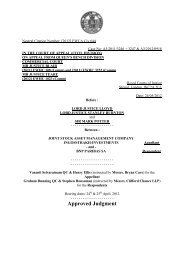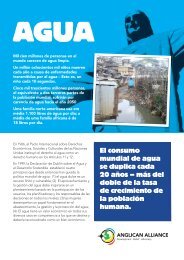Good practice contract management framework - Support
Good practice contract management framework - Support
Good practice contract management framework - Support
Create successful ePaper yourself
Turn your PDF publications into a flip-book with our unique Google optimized e-Paper software.
8 Section One <strong>Good</strong> <strong>practice</strong> <strong>contract</strong> <strong>management</strong> <strong>framework</strong><br />
The <strong>framework</strong><br />
1.4 The key activities to be undertaken under each of the 11 <strong>contract</strong> <strong>management</strong><br />
areas are set out below. The numbering is not intended to indicate that the activities<br />
should be executed in a sequential manner. Indeed, many of the areas and activities are<br />
relevant throughout the <strong>contract</strong> <strong>management</strong> phase.<br />
1.5 As discussed in more detail in Sections 2 and 3, not all of the 11 areas are equally<br />
relevant to all <strong>contract</strong>s. Generally, the more developmental and strategic areas and<br />
activities (areas 8 to 11) become increasingly important the higher the <strong>contract</strong> risk and<br />
the greater the opportunity to add value.<br />
Structure and resources<br />
Area 1: Planning and governance<br />
Preparing for <strong>contract</strong> <strong>management</strong> and providing oversight<br />
1.1 There is a planned transition from the tendering/<strong>contract</strong> award phase to the <strong>contract</strong> <strong>management</strong><br />
phase, and a handover to <strong>contract</strong> manager; the cost of <strong>contract</strong> <strong>management</strong> is included in the<br />
business case and budgets.<br />
1.2 Contract ownership is clear, with the budget holder, senior responsible owner (SRO), and <strong>contract</strong><br />
manager clearly defined; there is continuity of governance as far as possible.<br />
1.3 There are well defined processes and a clear <strong>contract</strong> <strong>management</strong> plan, with a focus on outputs<br />
and a ‘whole life’ approach to performance.<br />
1.4 Overall ownership of <strong>contract</strong> <strong>management</strong> across the organisation is clear, with a ‘<strong>contract</strong><br />
<strong>management</strong> senior responsible owner’ with responsibility for driving organisation-wide <strong>contract</strong><br />
<strong>management</strong> performance.<br />
1.5 Contract <strong>management</strong> processes are aligned with, among others, wider organisational governance<br />
processes, operational boards, and risk structures.<br />
1.6 Contract <strong>management</strong> issues and performance are reported through the governance structure with<br />
senior level engagement.<br />
1.7 Regular assessment and evaluation takes place to ensure that the cost of <strong>contract</strong> <strong>management</strong><br />
activities is justified and proportionate to the benefits obtained.<br />
1.8 Knowledge <strong>management</strong> is embedded, capturing key data and lessons from <strong>contract</strong> <strong>management</strong><br />
process and experience both within the organisation and more widely.<br />
1.9 Professional <strong>contract</strong> <strong>management</strong> guidance is developed, or identified from external sources, and<br />
made available to <strong>contract</strong> managers.



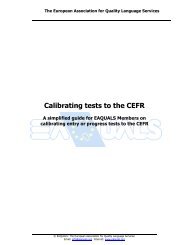
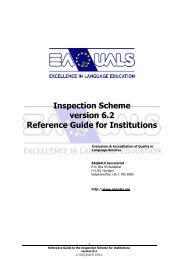
![[2012] UKUT 399 (TCC)](https://img.yumpu.com/51352289/1/184x260/2012-ukut-399-tcc.jpg?quality=85)


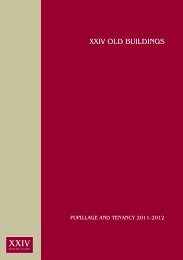


![Neutral Citation Number: [2009] EWHC 3198 (Ch) Case No: CH ...](https://img.yumpu.com/50120201/1/184x260/neutral-citation-number-2009-ewhc-3198-ch-case-no-ch-.jpg?quality=85)
